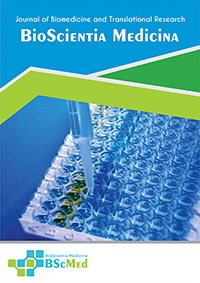Main Article Content
Abstract
Background: Exposure to the endocrine-disrupting chemical bisphenol A (BPA) is a suspected contributor to the type 2 diabetes mellitus (T2DM) pandemic. This study aimed to move beyond simple correlation and investigate the adjusted association between urinary BPA and the dual pathophysiological defects of T2DM—insulin resistance and pancreatic β-cell failure—with a novel emphasis on contrasting basal versus stimulated β-cell function in an understudied Indonesian cohort.
Methods: In a cross-sectional study, 40 patients with T2DM were recruited from a tertiary hospital in Palembang, Indonesia. Urinary BPA was quantified by liquid chromatography–mass spectrometry (LCMS). Insulin resistance was assessed by the homeostasis model assessment of insulin resistance (HOMA-IR). β-cell function was evaluated using the C-peptide index (CPI) at fasting and 1-hour post-75g oral glucose tolerance test (OGTT). Multivariable linear regression models were constructed to determine the association between urinary BPA (log-transformed) and metabolic indices, adjusting for age, gender, and body mass index (BMI).
Results: After adjusting for confounders, higher log-urinary BPA remained a significant independent predictor of higher log-HOMA-IR (β = 0.58, 95% CI: 0.31-0.85, p < 0.001). BPA was also independently associated with poorer β-cell function, showing a significant inverse association with the fasting CPI (β = -0.45, 95% CI: -0.73 to -0.17, p = 0.003). Critically, this association was markedly stronger and more profound with the 1-hour stimulated CPI (β = -0.79, 95% CI: -0.99 to -0.59, p < 0.001). The variance in stimulated CPI explained by the model (R2) was substantially higher than for other indices.
Conclusion: Higher environmental BPA exposure is independently associated with both heightened insulin resistance and compromised β-cell function in T2DM. The distinctly stronger association with impaired stimulated β-cell secretion, even after adjusting for key confounders, identifies a critical mechanism by which BPA may accelerate functional β-cell exhaustion, the pivotal event in T2DM progression.
Keywords
Article Details
As our aim is to disseminate original research article, hence the publishing right is a necessary one. The publishing right is needed in order to reach the agreement between the author and publisher. As the journal is fully open access, the authors will sign an exclusive license agreement.
The authors have the right to:
- Share their article in the same ways permitted to third parties under the relevant user license.
- Retain copyright, patent, trademark and other intellectual property rights including research data.
- Proper attribution and credit for the published work.
For the open access article, the publisher is granted to the following right.
- The non-exclusive right to publish the article and grant right to others.
- For the published article, the publisher applied for the Creative Commons Attribution-NonCommercial-ShareAlike 4.0 International License.





